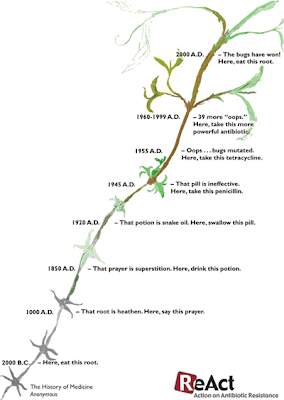The annual meeting of the UK’s Society for General Microbiology is taking place this week, so here’s a quick roundup of MRSA-related news. As with these posts from a year ago, abstracts are not online; in a few cases there are press releases from the science-news service EurekAlert.
- MRSA-colonized patients who have been identified in a hospital by active surveillance culturing may not need to be isolated to prevent their bacteria being transmitted to other patients by healthcare workers — provided hospital staff and visitors adhere to very vigorous handwashing. (P. Wilson, University College Hospital, London; press release)
- An engineered coating made of titanium dioxide with added nitrogen could be employed as an antibacterial surface in hospitals; exposure to ordinary white light activates the compound to kill E. coli and may be useful against MRSA also. (Z. Aiken, UCL Eastman Dental Institute; press release)
- The natural antiseptics tea tree oil and silver nitrate enhance bacterial killing when combined, which may also allow them to be used in lower doses – important for avoiding toxicity. It may also be possible to deliver them encapsulated in engineered sphere made of lipids called liposomes. (W.L. Low, University of Wolverhampton; press release)
- Overuse of antibiotics in farming is not only breeding resistant bugs in animals, it is also changing soil ecology and depleting nitrogen-fixing bacteria that improve soil fertility. The antibiotics are affecting soil when manure from drug-using farms is spread as fertilizer. (H. Schmitt, University of Utrecht; press release)

